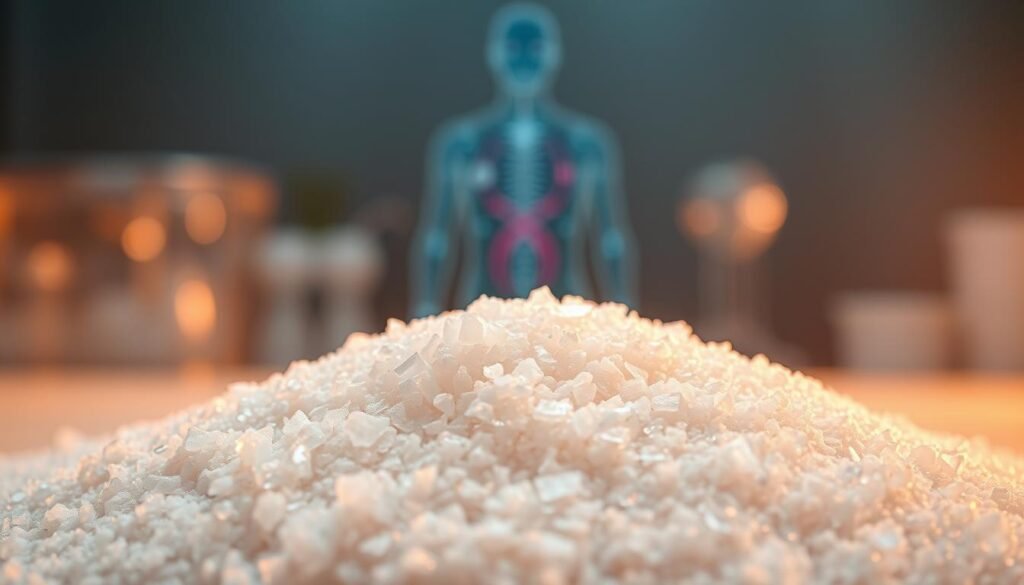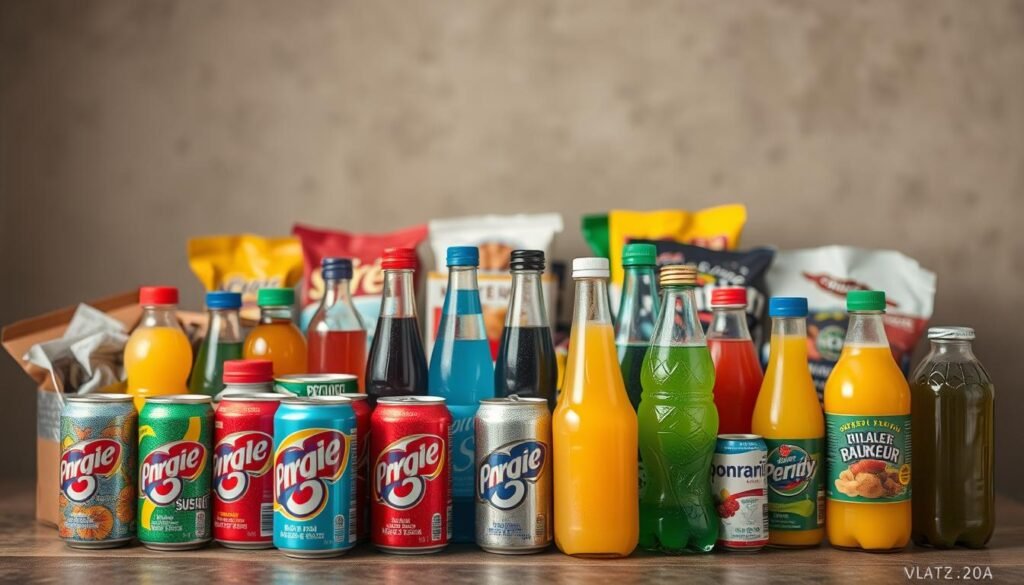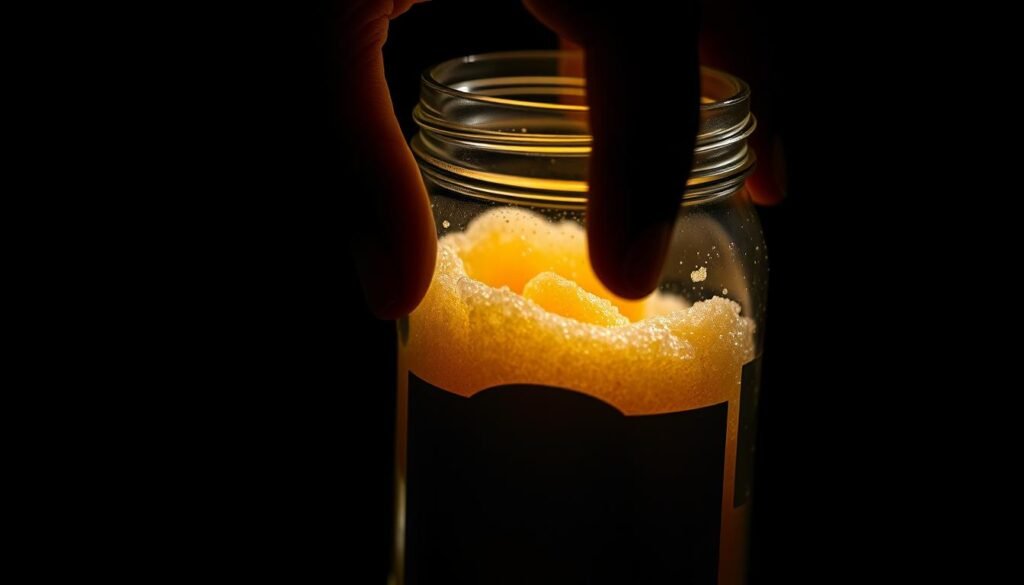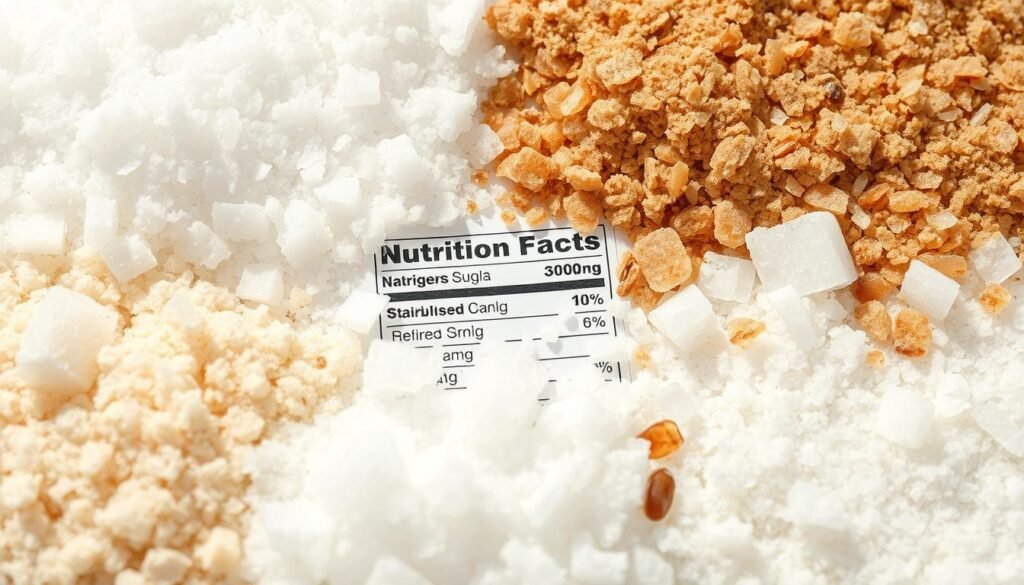Is Sugar the New Smoking? A Deep Dive into Added Sugar’s Health Risks

Many Americans drink, snack, or top meals with sweet items without a second thought. The average person in the United States consumes about 22 teaspoons daily, well above recommended limits. This routine exposure may raise the risk of heart disease, obesity, and high blood pressure.
Simple carbs like soda, candy, and sweetened yogurt produce fast dopamine hits. They digest quickly compared with complex carbs—fruits, vegetables, whole grains, and dairy—that offer fiber and slow release of energy.
The body processes excess sweeteners in ways that matter. The liver can become overloaded, triggering fat buildup and nonalcoholic fatty liver disease. Some sweeteners, such as high-fructose corn syrup, may also cause gut distress and draw fluid into the intestines.
This Ultimate Guide will show how to spot natural versus added forms, read labels, find common sources in food and drinks, and use practical steps to cut intake without feeling deprived.
Key Takeaways
- Routine exposure to sweetened items can harm long-term well‑being.
- Simple carbs spike dopamine and blood sugar faster than whole foods.
- Excess intake stresses the liver and raises cardiovascular disease risk.
- Many beverages act as stealth sources of empty calories.
- Practical label reading and swaps make reduction realistic for most people.
Why This Ultimate Guide to Sugar and Health Matters Right Now
Across a busy day, teaspoons of sweetener stack up from morning cereal to evening snacks. U.S. adults average about 17 teaspoons per day, roughly 14% of calories on a 2,000‑calorie menu.
That exceeds guidance to keep sweet intake under 10% of daily calories. The gap shows how hidden amounts in everyday foods and drinks push totals higher without clear awareness.
Long-term patterns of high intake link to obesity, heart disease, fatty liver, and type 2 diabetes. These conditions grow from years of steady excess, not just one bad meal.
This guide uses percent‑of‑calories and teaspoon equivalents to make science practical. Small cuts—swapping one drink or trimming a snack—reduce metabolic strain and lower cumulative risk.
What follows: clear advice on beverages, label reading, and smarter meal structure. The plan is evidence-based, realistic, and designed to keep flavor and convenience intact.
| Metric | Typical U.S. Adult | Recommended Target |
|---|---|---|
| Teaspoons per day | 17 tsp | 10% of calories (~12 tsp) |
| Percent of 2,000 kcal | ~14% | <10% |
| Associated disease | Obesity, heart disease, fatty liver | Lower long-term risk |
What Counts as Added Sugar vs. Natural Sugar
A quick look at a label often reveals how much of your day is sweetened. Whole foods like fruit and plain dairy contain natural sugars plus fiber or protein. Those elements slow absorption and ease blood sugar swings.
Label basics: “Total sugars” vs. “Added sugars”
On Nutrition Facts, Total sugars bundles natural and processed sources. The separate line for Added sugars shows only what manufacturers put in during processing.
Daily limits and real-world intake
Typical U.S. intake runs about 17–22 teaspoons per day. Guidance suggests roughly 6 teaspoons for women and 9 for men.
- Many packaged products—from cereal to flavored yogurt—stack teaspoons quickly.
- Scan serving size, grams of added sugars, and servings per package to estimate real intake.
- Choose minimally processed foods to lower totals without strict dieting.
Added Sugar Health Risks, Sugar and Health: What the Science Shows
Regular exposure to concentrated sweeteners shifts how the body stores and uses energy. Studies link frequent spikes to worse heart function, higher blood pressure, and low‑grade inflammation that wears on arteries over time.

Heart disease, high blood pressure, and chronic inflammation
High intake raises triglycerides and inflammatory markers. Those changes worsen lipid profiles and elevate stroke and heart disease odds. Over time, persistent inflammation stiffens vessels and stresses the heart.
Obesity, insulin resistance, and type 2 diabetes risk
Excess calories from sweet foods promote weight gain and blunt satiety. Hormonal shifts reduce insulin sensitivity, leading to higher blood sugar and greater diabetes incidence in populations with high exposure.
Nonalcoholic fatty liver disease and the fructose factor
The liver metabolizes fructose differently than glucose. Too much fructose overloads hepatic pathways, spurs fat storage, and raises the chance of fibrosis and nonalcoholic fatty liver disease.
Cancer links, cellular aging, and telomere shortening
Cohort studies associate greater sweetened beverage use with higher cancer rates. Chronic inflammation and insulin signaling likely play roles. High exposure also ties to advanced glycation and shorter telomeres—markers of accelerated cellular aging.
| Outcome | Mechanism | Evidence |
|---|---|---|
| Cardiovascular disease | Elevated triglycerides, blood pressure, inflammation | Higher incidence and stroke risk in high‑intake groups |
| Type 2 diabetes | Weight gain, insulin resistance, raised blood sugar | Strong links in longitudinal studies |
| Fatty liver | Fructose-driven hepatic fat accumulation | Biopsy and imaging studies show higher NAFLD odds |
| Cancer & aging | Inflammation, growth signaling, telomere shortening | Emerging cohort data and cellular markers |
Risk reduction: cutting exposures improves metabolic markers, lowers blood and inflammatory measures, and helps prevent multiple chronic disease endpoints.
Hidden Sugar in Beverages and Processed Foods
Liquid sources of sweeteners often deliver a concentrated dose of fructose with almost no filling fiber. That makes many common beverages easy to overconsume and hard to count toward daily targets.

High-fructose corn syrup, gut distress, and metabolic fallout
High-fructose corn syrup and other syrup sweeteners can stay in the small intestine when absorbed inefficiently.
Fluid shifts may cause bloating, gurgling, gas, or diarrhea. Ongoing exposure also taxes liver pathways and worsens metabolic markers.
Sodas, energy drinks, and fruit juice: liquid calories, bigger spikes
One 12-ounce soda can hold about 37 grams of sugar and 155 calories. That single drink can use a large share of daily limits and spike blood sugar quickly.
Fruit juice and juice blends often match soda for sweetness while keeping a “natural” image. Because they lack fiber, they fail to curb appetite the way whole fruit does.
- The quick fix: liquid calories do not prompt the same fullness as solid foods, so people drink more across a day.
- Scan labels for added sugar amounts and serving sizes before buying beverages.
- Swap in water, seltzer, unsweetened tea, or plain coffee to cut intake without losing hydration or flavor.
Repeated spikes from daily drinks strain the heart and promote weight gain over time. Simple swaps and label checks reduce that risk while keeping routine enjoyable.
Mood, Stress, and the Brain: How Sugar Shapes Mental Health
Cravings often begin in the brain: a rapid taste cue triggers reward circuits that ask for more.

Dopamine hits, cravings, and energy crashes
Quick pleasure from sweet foods floods dopamine pathways and reinforces the behavior. That loop leads to new cravings and uneven energy that can hurt focus and mood.
When spikes fall, the body signals for another boost, producing short-lived highs and deeper lows.
Stress, anxiety, and depression: what leading organizations advise
Research links high intake to higher rates of depression and trouble concentrating. Stress physiology amplifies this effect, so stabilizing routines helps overall health.
Experts suggest regular meals, good sleep, and managing anxiety as core tools to reduce reliance on sweet treats and extra calories from added sugar.
Mindfulness and digital detox to curb cravings and improve resilience
Mindfulness trains people to notice urges and delay automatic snacking. Simple pauses break reactive habits and restore control.
- Try short breathing breaks before reaching for sweets.
- Limit evening screen time to cut exposure to ads and late-night cravings.
- Choose whole fruits and sip water to smooth blood sugar and maintain steady energy in the body.
Small changes—regular meals, mindful pauses, and less late-night scrolling—reduce mood swings and lower long-term risk.
Spotting Added Sugars on Labels and Menus
Labels and menu descriptions often hide sweeteners behind unfamiliar names that read like harmless ingredients. “Read the ingredient list, not just the front label.” That habit reveals many forms of sweetening that add calories and change a meal’s profile.

- cane sugar, evaporated cane juice, brown rice syrup
- corn syrup, high‑fructose corn syrup, maltodextrin
- agave, molasses, fruit juice concentrates
- maltose, dextrose, glucose syrup
Breakfast traps are real. Many cereals and flavored yogurts push a sensible amount of sweetening before noon. One bowl plus a flavored yogurt can equal a dessert in total grams.
Condiments hide extras too. Ketchup, honey mustard, BBQ sauce, and some dressings add stealth sweetness to balanced meals. Even a spoonful can change a plate’s total.
Decode the “health halo”
Products that claim “natural,” “whole grain,” or “protein” may still list several sweeteners. Favor shorter ingredient lists and compare brands by the added grams per serving.
Quick checklist when you shop or order:
- Scan for any alias from the first list.
- Choose the product with fewer items on the ingredient panel.
- Pick lower grams per serving on Nutrition Facts for an easier swap.
Build menus around minimally processed foods—whole fruit, plain dairy, vegetables, lean protein—to avoid cumulative sweeteners from multiple small sources in a single meal. This simple habit keeps portions sensible and reduces long‑term risk.
Smarter Nutrition Strategies to Cut Sugar Without Feeling Deprived
Small swaps at each meal can curb cravings and keep energy steady through the afternoon. Build plates that focus on filling, minimally processed choices so you naturally eat less sweetened fare.
Build meals around fiber, protein, and healthy fats
Center breakfasts and dinners on high‑fiber vegetables, whole grains, beans, nuts, and legumes. These foods slow digestion and steady blood glucose.
Pair those choices with lean protein sources to increase satiety and preserve lean body mass. Add olive oil or avocado for flavor and lasting fullness.
Hydration swaps: water, seltzer, and coffee done right
Replace sweet drinks with plain water or seltzer to cut large spoonfuls at once. Coffee and tea work well when taken without syrups; use lemon or a dash of cinnamon instead.
Blue Zone-inspired patterns and longevity-friendly habits
Adopt more plant-forward meals, fewer refined products, and shared dining. These patterns favor whole fruits and vegetables over processed sweets and may support better heart and cancer outcomes.
| Strategy | Why it works | Practical tip |
|---|---|---|
| Fiber-forward plates | Slows absorption; reduces peaks in glucose | Swap refined grains for oats, brown rice, or barley |
| Protein at each meal | Boosts satiety; cuts snacking | Add eggs, beans, fish, or Greek yogurt |
| Drink swaps | Eliminates large liquid sweet loads | Choose water, seltzer, or black coffee |
| Blue Zone habits | Whole foods and social meals lower reliance on treats | Cook simple plant meals and eat with others |
From Plan to Practice: A Simple, Sustainable Action Blueprint
Choosing whole, minimally processed foods at the perimeter of the store makes big differences over a few weeks. Start with a short plan that lists low-sweet foods and beverages, then pick a realistic amount of prep time you can keep each week.
Shop, cook, and snack strategies that lower sugar today
Shop smart. Favor plain dairy, unsweetened nut butters, low-sugar cereals, and sauces without added sugar. Read labels on beverages and packaged food before they enter the cart.
- Create a weekly plan: list quick breakfasts and snacks, and pre-commit to simple prep steps.
- Batch-cook proteins and fiber-rich sides so meals assemble fast and avoid last-minute choices.
- Use breakfast anchors like rolled oats, eggs, and plain yogurt topped with fruit to start the day steady.
- Keep hydrating beverages visible—water bottles and seltzer—so low-sweet choices feel automatic.
- Snack strategically: nuts, vegetables with hummus, or fruit with cheese help people with diabetes manage post-meal responses.
Practical repeatable steps beat perfection. Over time, the body adapts, cravings ease, and average sugar intake drops. Small, steady moves improve daily nutrition and make sustainable eating the new routine.
Conclusion
Cutting common liquid treats and processed syrups often gives the fastest wins. High sugar intake drives weight gain, raised blood pressure, chronic inflammation, and higher chances of heart disease, type 2 diabetes, fatty liver, and some cancer types.
Prioritize whole foods and swap sweetened beverages for water, seltzer, or plain tea to curb large, fast glucose loads. Read labels for added sugars and ingredients like corn syrup so routine products stop raising daily amounts.
Small, steady changes—fewer sodas, less fruit juice, smarter snacks—improve energy and stabilize blood markers over time. With simple routines and label savvy, anyone can lower sugar burden and protect long‑term well‑being.





